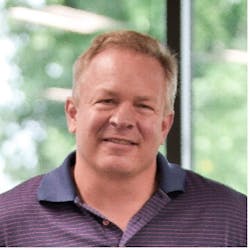Getting Closer to the Edge: Data Centers Move Closer to Consumption
Data centers that were built to manage the needs of traditional enterprises are not equipped to handle the requirements of edge computing. Bandwidth limitations, latency issues and unpredictable network disruptions can all impact the centralized data center model. For example, a difference of milliseconds in latency in response from the server can be critical in future use cases such as remote surgery, autonomous vehicles, and immersive gaming.
However, more computing resources distributed around a network can push up overall power consumption and introduce utilization challenges, driving the need for more modular and efficient solutions to power the servers that will live at the edge.
Minimizing power consumption and driving down costs are key challenges for data center operators as they look to meet the increased power demands of the latest high-performance processors. The retail electricity price in the USA was an average of 11.18 cents per kilowatt hour in 2021, a year-over-year growth of over 5%; with a prediction of an 8% increase in 2022, averaging 14.9 cents per kilowatt hour. Industrial electricity prices have been relatively stable over the past decade, but every sector will see increases.
A response to the need for higher efficiency to lower electricity consumption and cost has seen hyperscale and enterprise data centers adopt new approaches across their infrastructure, including the architecture of the racks that house individual compute, storage and networking elements. The Open Compute Project (OCP) has been a driving force in revolutionizing data centers and the OCP Open Rack project has developed an architecture that uses an AC to DC power shelf with 48 V as a preferred standard for power distribution within a rack of IT equipment replacing the previous 12 V approach, known as Open Rack Version 3 or ORv3. This is now being adopted at the edge.
As data center rack density increases, so does the amount of electricity required to power the rack. With ORv3, you now have 18 kW per rack from a single power shelf, and artificial intelligence/machine learning (AI/ML) pushed this to 36 kW per rack (two power shelves) and beyond.
Organizations are leveraging more and more data to stay close to their consumers. This impacts the largest core data centers and enterprises, including retailers who look to migrate from traditional centralized approaches to data management and storage to highly scalable edge systems. Consider a retailer with an IT footprint to equal any large enterprise, with servers located in hundreds of stores and distribution centers across the country. This means that each store now includes a mini data center that can take advantage of open standards, such as OCP, adapted for the needs of edge computing to support the growing number of retail applications.
As higher performance compute and storage platforms demand more power, 48 V distribution is being adopted as it offers higher efficiency, delivering four times less current for the same power of a 12 V system and 16 times lower distribution losses. This results in significantly better thermal performance, smaller busbars and increased efficiency, minimizing power consumption and driving down costs while meeting the increased power demands of the latest high-performance processors.
Brian Korn is the Vice President of Data Center Computing at Advanced Energy and brings broad experience in embedded power solutions for data center computing, hyperscale, telecom and network products. Contact Advanced Energy to learn more about how their OCP compliant platform is an enabler in bringing interoperability, enhanced reliability of compute and storage applications and energy savings to hyperscale, enterprise data centers and edge computing deployments.



